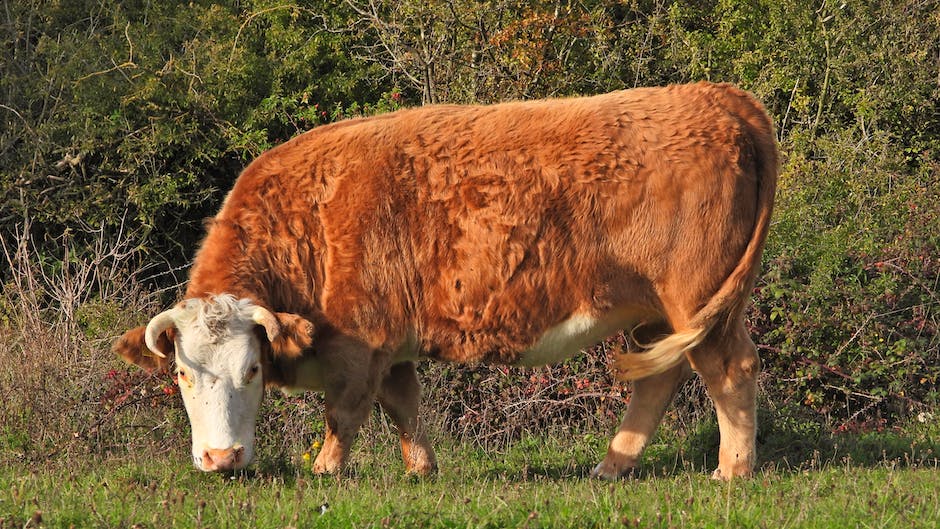

Agridisk
Egypt - Alexandria
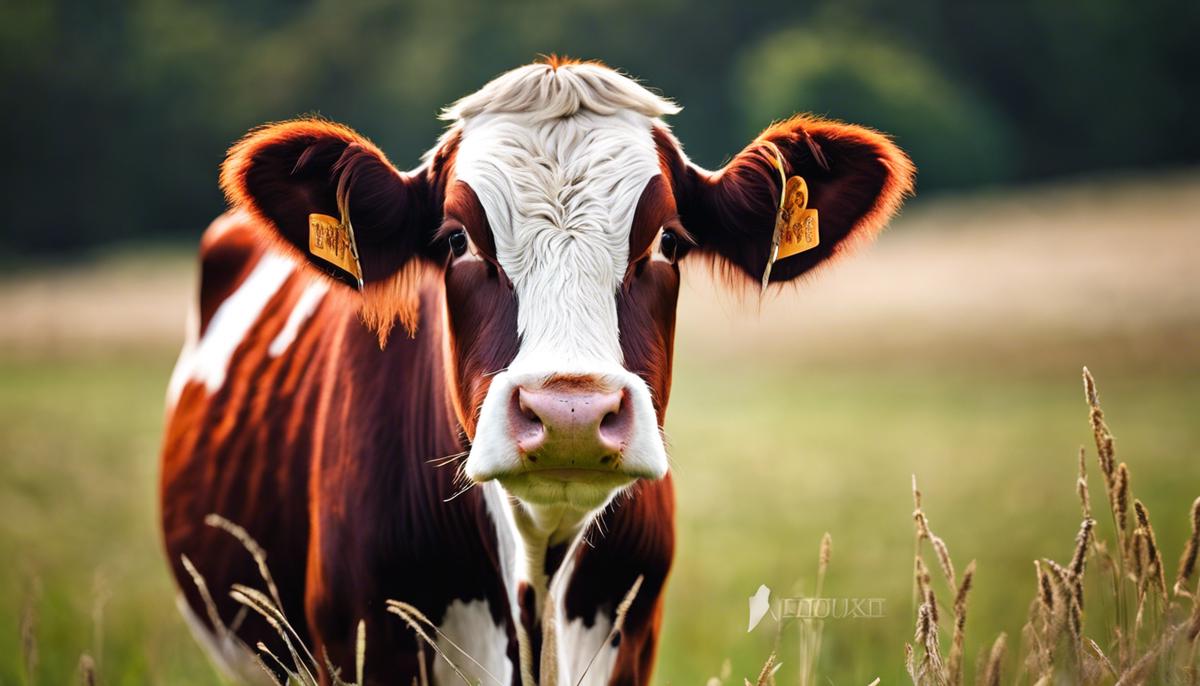
Hereford Cattle | Characteristics Rasing & Feeding
Description: A deep dive into the world of bovine farmers reveals a common preference - The Hereford Cattle. Renowned for its distinctive characteristics, adaptability, and resilience, this breed is indeed an interesting choice for enthusiasts and seasoned farmers alike. This essay offers an in-depth look into the specifics of rearing Hereford Cattle. We'll explore their unique physical and temperamental attributes, discuss effective raising and care tips, and delve into their nutritional requirements and feeding strategies. Adding to this rich compilation of information is the critical analysis of the breeding methods of the Hereford cattle, providing a complete guide for this revered breed. Hereford Cattle, also fondly known as 'Herefords', are an incredibly popular breed for farming. But why has this breed captured the hearts (and farms) of so many around the globe? The secret, or rather the beauty, of Hereford cattle lies in the breed's many desirable traits. For starters, Herefords are known for their exceptional adaptation capabilities. From the icy landscapes of Canada to the balmy climes of Australia, Herefords thrive in a multitude of conditions, making them a versatile breed for farming in diverse landscapes and climates. Adding to their stardom in the farming industry is their hardiness. Herefords are incredibly hardy creatures, standing strong against diseases and parasites that often trouble other cattle breeds. This resilience contributes largely to their cost-effectiveness – fewer disease-related issues meaning lower vet bills and less heartache for farmers. But the Hereford ticks just do not stop there. Their exceptional weight gain rate - Herefords mature quickly and gain weight efficiently - is another reason why they sit pretty in many a farmer’s plan. This rapid weight gain is beneficial for both meat production and for sale, providing an attractive return on investment quicker than many other breeds. Hereford cattle are also famous for their overall docility. They are calm and relatively easy to handle, leading to smoother and safer farming operations. Plus, this gentle nature makes them easier to manage in commercial farms, smallholdings, and for those relatively new to the cattle-rearing hobby. Their most obvious attribute, perhaps, is their delightful appearance. With a distinctive red body and white face, not to mention their stocky build, Herefords are a sight to behold and a badge of pride and joy on any farm they graze. The farming of Hereford cattle isn't just about striking looks or easy handling, though. This breed is well-renowned for its excellent beef quality. Hereford beef is known for its superior marbling, tenderness, and its delicious flavor – making it a choice breed for beef production. In the world of farming, Hereford cattle are a true blue-ribbon breed. With their fascinating mix of ease-of-care, adaptability, rapid weight gain, and superlative beef quality, Herefords offer a multitude of advantages for farmers. Whether farming is a leisurely hobby or a committed profession, choosing the Hereford breed can mean stepping into a world punctuated by resilience, profitability, and ultimately, satisfaction. Nurturing Hereford cattle into flourishing, productive bovines is much like cultivating any talent, demanding both knowledge and practice. Yet, with a blend of patience, care, and an understanding of the breed's unique needs, anyone can partake in the rewarding journey of raising Hereford cattle. Proper nutrition is the cornerstone of Hereford cattle's wellbeing. An ideal diet is abundant in forage - grass, hay, or silage. Forage provides the necessary nutrients and energy that Herefords require to grow and function optimally, fostering a healthy digestive system. However, during winter months or dry spells, when fresh pasture isn't readily available, supplementing the diet with grain and quality hay ensures a balanced nutritional intake. Water, of course, is a crucial element in every living creature’s diet, and Herefords are no exception. Ensuring access to a clean and constant water source can uplift their health noticeably. It's essential to maintain hygiene, cleaning and refreshing water troughs regularly to prevent the spread of diseases. While nutrition is paramount, having a decent understanding of the breed's unique environmental requirements is just as vital. Contrary to common belief, these robust cattle are susceptible to temperature stress. Offering shaded areas during hot weather and windbreaks to temper chilling winter winds helps maintain the herd’s comfort level and overall productivity. Herefords' thick coats provide them thermal regulation, but concrete steps to protect them from harsh weather conditions are beneficial. One of the defining traits of the Hereford breed is their placid nature, which, when combined with a consistent handling routine, can do wonders. Regular handling familiarizes the cattle with humans, bolstering their amiable disposition, and making routine veterinary care and inspections easier. Speaking of veterinary care – routine health checks play an integral role in raising Hereford cattle. Regular vaccinations, deworming, and treating visible signs of illness or infirmity promptly can nip potential health crises in the bud. Ride the wave of technological advancements by keeping up-to-date health records for each of your herd members. These digital records can be a boon for planning vaccination schedules, analyzing growth rates, or even planning breeding cycles. Breeding Hereford cattle effectively requires a firm grasp of their reproductive cycle, the appropriate age for first breeding, and the care required during the gestation period. Carefully selecting strong, healthy bulls and heifers, and providing necessary prenatal care will ensure a thriving offspring. Beyond all these practicalities, patience is the key. From birthing calves to watching them grow into strong, healthy, and productive cattle, each step is a time-intensive process. Yet, witnessing the propagation of this magnificent breed and the dividends it yields makes all the effort worthwhile. From the uninitiated to the seasoned cattle farmer, raising Hereford Beef is a worthwhile endeavor. There is beauty in the journey and, unquestionably, the 'beef' at the end is quite a fantastic bonus. Step into the venture with the right combination of knowledge, care, and patience, and you'll master the art. There's no greater satisfaction than watching your Hereford herd grazing peacefully, knowing you've nurtured them every step of the way. Let's dive into the distinctively flavorful world of the Hereford breed, renowned for its excellent beef quality and fast weight gain rate. To understand the best dietary practices for this particular breed, it's crucial to ensure that their nutritional needs are met adequately. Taking a closer look at Hereford cattle's nutrition, it's crucial to know that just like human beings, a balanced diet is integral. They typically thrive on a diet made up of carbohydrates, proteins, vitamins, and minerals. However, these needs can't all be met by merely grazing. The dietary requirements can vary depending on the size, age, reproductive state, and the health status of the cattle. Forage plays an immense role in feeding Hereford cattle. High-quality forage should compose the major part of their diet as it provides the energy, protein content and fiber necessary for their digestion. This energy drives their growth and lactation cycles. However, sometimes forage alone may not meet the nutritional gaps. This is where supplemental feeding comes in. Common supplements include corn, soy, and alfalfa - all aids in ensuring a complete, balanced diet that maximizes the health and productivity of your Hereford herd. Water, while not technically a part of the diet, is an essential part too of Hereford cattle's health. They need constant access to clean, fresh water. It's even more important during hot weather or for lactating cows, where the requirement can be as high as 30 gallons per day. So, water access isn't something that should be skimped on. When considering feeding, it's also key to grasp the unique environmental requirements of Hereford cattle. They are a hardy breed and can adapt to varying climates, but their dietary needs will change with the weather. In colder climates, provisions must be made for increased energy needs, while in hotter seasons, electrolytes might need boosting to prevent dehydration. Of course, alongside good dietary practice comes the need for routine veterinary care and health checks. Regular examinations ensure early detection of disease, while vaccinations help to protect the herd from common infections. This all ties together with meticulous record-keeping. Having well-kept health records allows critical trends in weight gain, disease outbreaks, and fertility patterns to be identified and addressed promptly. And lastly, patience is the all-important virtue for anyone raising Hereford cattle. Like any other hobby, it can be laborious at times – but the rewards are immense. Seeing your herd grow strong and healthy is profoundly satisfying, and there's the added bonus of contributing to sustainable meat production. The payoff makes every effort worthwhile. Bring together these essential elements, and you're well on your way to effectively managing your Hereford herd's dietary considerations. Breeding Hereford cattle comes with its unique challenges and rewards. Let's delve into some key considerations that will help maximize both the health and productivity of a Hereford herd. Making sure Hereford cattle are receiving a proper diet, balanced in all aspects, is crucial. This breed requires carbohydrates, proteins, and also a right mix of vitamins and minerals. Ignoring any of these vital components may lead to health issues, impacting the herd's overall productivity. Forage plays a pivotal role in a Hereford's diet. Grazing on pasture is the cattle’s primary food source, suppling necessary fibers for digestion. Herefords are grazers by instinct but also appreciate and benefit from supplemental feeding. Certain common supplements, such as mineral blocks or grain supplements, can augment the diet during drought, winter, or other periods when natural forage is scarce. Clean, fresh water is another vital aspect not to be dismissed casually. Access to an adequate supply is vital for digestion, nutrient absorption, body temperature regulation and overall well-being. Water availability should be regardless of the prevalent weather conditions, considering that a mature Hereford cow can consume between 15 to 25 gallons of water per day. Environmental considerations are equally important when dealing with Herefords. While this breed is known for its hardiness, ensuring they have adequate shelter to protect against extreme weather conditions is pivotal. A comfortable cow is likely to be a more productive cow. Just as with humans, socializing Hereford cattle has a range of benefits. It can increase their comfort around humans, making them easier to manage. Moreover, properly socialized cattle are often safer to be around. Routine veterinary care and thorough health checks help to prevent and early detect any possible health issues. Early detection increases chances for treatment and recovery, ensuring the wellbeing and productivity of the herd. Keeping up-to-date health records and utilizing modern technology can provide essential insights into the health and productivity trends within the herd. Such information can help in making informed decisions about the welfare and management of the cattle. Breeding Hereford cattle effectively is more of an art than a simple task. It requires an understanding of the Hereford’s reproductive cycle, as well as the optimum conditions for breeding. Remember, patience is a virtue, especially in cattle ranching. The process requires time, care, and perseverance. But the reward of seeing a healthy, productive Hereford herd grazing on the pastures is worth every bit of the effort. The satisfaction derived from raising Hereford cattle is not just about the financial gain; it goes beyond to the pride and fulfillment of being an integral part of the cattle industry, the backbone of our agricultural sector. All these considerations combined make raising Hereford cattle an exciting and enriching hobby. So, as you venture into this journey with your Hereford herd, these points will keep you focused, maximizing the benefits of your effort. After all, the greatness of a cattle farm doesn't lie in the vastness of acreage; it's in the quality and wellness of every single cow. So, here's to raising healthy, happy, and productive Herefords! Understanding the nature and needs of Hereford Cattle is the key to successful and sustainable farming. The correlation between their physical traits, diet, environmental adaptation, and breeding practices is evidently significant. As this text has shown, establishing a thriving and healthy Hereford herd requires deliberate efforts in not just ensuring their physiological wellbeing, but also in nurturing their mental health. Home to valuable insights and practical advice, this document serves as an engaging and comprehensive guide for anyone interested in raising and breeding Hereford Cattle. With their distinctive red bodies and iconic white faces, Hereford cattle signify more than just an animal bred for agricultural purposes; they represent a pivotal chapter in the annals of farming history and genetic achievement. These robust creatures originated from the fertile lands of Herefordshire, England, and have since traveled across oceans to etch their hoofprints on global pastures, profoundly influencing the course of agricultural development and meat production. This essay ventures into the rich tapestry of the Hereford cattle's legacy, genetic makeup, and contributions to modern sustainable agriculture and the meat industry, revealing a story that intertwines the evolution of a breed with the fabric of human society and its unending pursuit of agricultural excellence. Hereford cattle, a breed recognized by their distinctive white faces and reddish-brown coats, have etched an indelible legacy in agrarian history. Originating from Herefordshire, England, in the 1700s, these hardy ruminants have been pivotal in shaping agricultural practices and animal husbandry. The initial breeding goal for Hereford cattle was clear: to produce animals that could maximize the use of available forage while withstanding the variable European climate. Early breeders sought to cultivate a breed that was both efficient and hardy. The outcome was an animal that could flourish in different environments, a trait that has been instrumental in its global dissemination. As the industrial revolution took hold, productivity became paramount, shaping agricultural imperatives. Hereford cattle proved invaluable during this era, as they exhibited a remarkable feed conversion efficiency. This meant that they could convert lower-quality feed into high-value protein, a crucial element for feeding an expanding population. Their docile nature further facilitated their widespread integration into various farming systems, easing the burden on farm laborers. With the advent of selective breeding and genetics, the Hereford continued to play a transformative role in agrarian history. Breeders have fine-tuned characteristics like growth rate, meat quality, and reproductive efficiency. The result was a versatile breed that not only met the demands of the burgeoning beef industry but also contributed valuable genetic attributes to crossbreeding programs. Herefords were among the first cattle breeds to set hoof on the New World, contributing significantly to the development of the American West. Ranchers prized these cattle for their ability to thrive on the open range and endure harsh winters. This adaptability opened new frontiers to livestock farming, promoting the expansion of ranches and the adoption of range management techniques that are still pivotal in modern agriculture. Furthermore, Hereford cattle have been instrumental in establishing the beef industry's market standards. Their consistent meat quality — characterized by tenderness, flavor, and marbling — set benchmarks that guide breeders, ranchers, and butchers in producing premium beef. This, in turn, impacts global food markets and trade, reiterating the breed's substantial economic influence. In the domain of sustainable agriculture, Hereford cattle continue to contribute to the development of practices that balance productivity with environmental stewardship. Their efficient grazing can support soil health, and their overall hardiness aligns with the ethos of low-input farming systems, reducing reliance on supplementary feeds and veterinary interventions. In essence, the multifaceted impact of Hereford cattle on agrarian history is profound. They have been, and continue to be, a cornerstone of animal husbandry, enhancing the efficiency and sustainability of global agriculture. As society progresses towards responsible food production, the Hereford breed’s significance in the agricultural narrative remains as relevant as ever. The revered Hereford cattle, poised statuesquely amidst pastoral landscapes, are recognizable by a distinctive set of genetic traits. Amongst these, a rich reddish-brown coat saliently punctuates the panorama, save for their quintessential white faces, underbellies, and stockings. This pigmentation pattern is not mere happenstance but rather a direct result of a genetic sequence that underpins their iconic coloration. Equally telling of the Hereford's legacy is the presence of a gene variant that imparts a relatively docile temperament. This phenotypic comportment makes the Hereford an amiable partner in agricultural settings, facilitating ease of handling and management. The genetic disposition for a tranquil demeanor, therefore, emerges as an asset, contributing not only to reduced labor but to the welfare of the animals themselves. Further inspection of the Hereford genome reveals loci associated with efficient feed conversion. These creatures are endowed with a genetic propensity to convert fodder into muscle mass with notable alacrity. Such genetic efficiency situates Herefords as paragons of productivity within the cattle industry, making them a staple in meat production ecosystems. Muscle conformation in Hereford cattle is programmed within their DNA to yield a high muscle-to-bone ratio, thus proffering copious, high-quality cuts of beef. Defined by genetics, their well-rounded physical build channels into a harvest that underscores the breed’s significance in setting butchery benchmarks. At the heart of reproduction and herd resilience lies the Hereford's genetic endowment for pronounced fertility and robust calf viability. These traits are crucial in perpetuating the breed, ensuring that each subsequent generation emboldens industry standards. Scientific endeavors continue to decipher the Hereford cattle genome, shedding light on disease resistance markers and trait heritability. This information is pivotal, empowering breeders in their quest to further refine the breed’s genetic architecture, ensuring its providence into the future. In a world where genomic insights are leading tomorrow’s agricultural revolutions, the Hereford cattle breed stands as a testament to how genetics shapes not just an animal, but the very fabric of human sustenance and economic vitality. Embarking upon the labyrinthine complexities of reproductive science offers an extraordinary potential to further refine and enhance the Hereford breed, a bovine lineage that has, heretofore, substantively influenced both the landscape of agricultural productivity and the very fabric of human sustenance. Reproductive science stands as the vanguard to the extraordinary potential for refinement in the Hereford lineage, opening ventures that align prodigiously with the exigencies of modern agriculture. Advancements in reproductive technologies, such as artificial insemination (AI) and embryo transfer (ET), have been paramount in expediting the dissemination of elite genetic traits within the Hereford population. These methodologies capacitate the insemination of cows with semen from preeminent bulls, thereby circumventing the geographical and temporal constraints that previously encumbered traditional breeding practices. AI facilitates a broad-spectrum genetic amalgamation, escalating the propagation of desirable traits within the Hereford gene pool. Embryo transfer, an adjunct to artificial insemination, furthers the praxes of genetic refinement. Superior cows can be superovulated to produce numerous ova which, once fertilized, can be implanted in surrogate mothers, effectively amplifying the progeny from valuable breeder cows. This allows for the amplification of top-tier genetics within the Hereford breed at an accelerated rate compared to conventional breeding methods. Moreover, reproductive science introduces the precepts of advanced genetic screening and selection. Quantitative Trait Loci (QTL) mapping and Genomic Selection (GS) are pillars in identifying the genetic markers associated with favourable traits such as feed efficiency and disease resistance. Such technologies are quintessential in the meticulous tailoring of the Hereford genome. Precision and efficacy in reproduction are equally enhanced with the advent of synchronization protocols that orchestrate the estrus cycles of herds, thereby streamlining insemination and calving schedules. This ensures that breeding and calving occur at times optimal for both the animals and farm operation, thereby minimizing calving difficulties and optimizing animal husbandry. Despite the lucid benefits that reproductive science extends to the Hereford genetic tapestry, ongoing research is pivotal. It scrutinizes the ethical considerations and long-term implications of such profound intervention in natural processes. The paramountcy of maintaining genetic diversity to avert a constricted gene pool is well acknowledged and is diligently surveiled. Reproductive science, therefore, serves as an invaluable architect in the advancement of Hereford cattle. With its arsenal of refined techniques and methodologies, it paves a path toward an era where the confluence of genetics, animal health, and agricultural productivity can evolve in concordance with the demands of a growing human population and the prescient stewardship of our natural resources. Grazing Management and Ecosystem Balance Among the myriad contributions of Hereford cattle to sustainable farming practices, their grazing behavior and the management thereof stand out as pivotal. Grazing, when carried out with discernment, has the capacity to not only provide sustenance to the herd but also to enact beneficial effects upon the ecosystem. The Hereford breed has been historically found to be proficient at utilizing rough forage from pastures that might be unsuitable for other agricultural purposes. Their grazing can contribute to the healthy turnover of plant life, allowing a myriad of fauna to proliferate. This fosters biodiversity, increasing the resilience of the ecosystem. Grassland Soil Enhancement The interaction between Hereford cattle and the soil is of no minor consequence. As these animals graze and move across the land, they naturally aerate the soil with their hooves, which can improve its structure and fertility. Furthermore, the manure of these animals acts as an organic fertilizer, enriching the soil with nutrients. Instead of leaning on synthetic fertilizers, which can be detrimental to the environment, the natural process of soil enhancement through Hereford cattle grazing is an exemplar of sustainable practice. Resource Utilization and Efficiency In consideration of their feed conversion efficiency, Hereford cattle stand as exemplars of resourceful livestock. Their ability to convert grass into body mass is highly efficient, meaning they can produce more beef with less input in comparison to some other breeds. The implications of this are two-fold. Firstly, this efficient conversion reduces the need for supplementary feed, which in turn diminishes the ecological footprint associated with producing and transporting additional feedstuffs. Secondly, this efficiency means that Hereford cattle require less acreage per head, thereby reducing the pressure to clear additional land for grazing, which is crucial for conserving habitats and curbing deforestation. Climate Impact and Methane Reduction Strategies The enteric fermentation process in cattle produces methane, a potent greenhouse gas. However, the efficiency with which Hereford cattle convert feed to meat also implies less methane production per kilogram of beef when compared to less efficient breeds. Moreover, current research is exploring how dietary supplements can reduce methane emissions from cattle, with studies showing promising results. Breeding strategies that include selecting for low-methane-emitting animals are also in development—pioneering work that could vastly influence the broader cattle industry. Water Conservation Water usage is an undeniably significant aspect of cattle rearing. The Hereford breed’s inclination towards hardiness and their efficient feed conversion extend to a lesser dependence on large quantities of water for sustenance. Moreover, the adaptability of these cattle to diverse climatic conditions allows them to thrive in areas where water resources might be scarce. By managing the herd size and grazing zones, farmers can ensure that there is minimal impact on water bodies and that the natural hydrological cycles are maintained, contributing to regional water conservation efforts. Symbiosis with Farming Systems The Hereford breed's utility is magnified when incorporated into mixed-use farming systems, often called agroecological farming. By integrating crop production and livestock, farmers can create a loop of beneficial interactions. For instance, cattle can graze on crop residues, reducing waste and returning nutrients to the soil through their manure. Simultaneously, the presence of livestock can diversify income streams and increase economic resilience for farming operations. Their steady demeanor and the colocation of Hereford cattle with other livestock or within diversified agricultural operations can positively impact the longevity and sustainability of farming systems. Breeders and farmers continue to work in tandem with natural processes to enhance these synergies. It is becoming increasingly clear that Hereford cattle are not simply a means to an agricultural end but are integral to the movement towards sustainable farming. The contributions of Hereford cattle to sustainable farming practices are substantial and multifaceted, rooted in principles of ecology, efficiency, and careful stewardship of natural resources. Through prudent management and a commitment to continuous improvement, the legacy of the Hereford breed stands as a paragon of sustainable agriculture. In the context of modern meat industry dynamics, Hereford cattle play an instrumental role that encompasses not only their place within the commercial supply chain but extends to their impact on agricultural methodologies and economic strategies. This discussion is framed by an acknowledgment of their intrinsic contributions to the field, without delving into previously covered topics. The presence of Hereford cattle within the value chain of meat production is marked by their consistent ability to produce high-quality beef at a competitive cost. Efficiency, as a cornerstone of modern industry, is notably reflected in the breed's rapid growth rates and adaptability to various climatic conditions. This adaptability translates to lower overheads for cattle producers and facilitates widespread distribution of these bovines across diverse geographic landscapes. Moreover, Hereford cattle are at the forefront of advancements in carcass quality and grading systems. It is their consistent muscle development and superior marbling that sets the bar for quality, which in turn dictates market trends and consumer expectations. These attributes play a vital role in defining premium segments of the beef market and bolstering niche marketing. Crossbreeding programs, benefiting from the strength of Hereford genetics, have contributed to the enhancement of composite breeds. This strategy enables the industry to cater to niche markets by combining the meat quality attributes of Herefords with the advantageous traits of other breeds. Consequently, this enriches the diversity of product offerings and broadens the potential for market expansion. The economic aspect of Hereford cattle within the meat industry is equally important. Maximizing profit margins hinges on predictable and consistent output, which Herefords provide. Their resilience in terms of health, coupled with their relatively low maintenance and feed costs, directly benefits the revenue models of farming operations. The cost-benefit ratio associated with raising Hereford cattle remains attractive to both small-scale producers and large-scale agricultural enterprises. Furthermore, as advocates of humane and ethical treatment of livestock gain influence, Hereford cattle are gaining recognition for their naturally calm disposition. This behavioral trait ensures ease of handling and the wellbeing of the animals during transportation and processing, aligning with both humane practices and regulatory standards. In the evolving landscape of consumer preferences, which now increasingly includes consideration for the environmental footprint of dietary choices, Hereford cattle offer a palatable compromise. By converting grass into nutrient-rich beef, they exemplify sustainable meat production while maintaining the ability to provide the quantity and quality required to feed a growing population. Lastly, there is a symbiotic relationship between Hereford cattle and precision agriculture technologies. These technologies allow for an enhanced understanding and management of each animal, optimizing feed efficiency, health monitoring, and ultimately, meat production processes. The future of meat production leans heavily toward technology-driven decision-making, in which Herefords are poised to remain an integral component. Hereford cattle represent a convergence point where tradition and innovation coalesce to support a thriving, robust meat industry. Their role is multifaceted—incorporating economic viability, quality production, and environmental mindfulness—characteristics essential in navigating the contemporary challenges of supplying animal protein to the global populace. The narrative of Hereford cattle is deeply interwoven with the human journey toward agricultural mastery and food security. Through a remarkable blend of resiliency and genetic prowess, these animals have not only weathered the storms of change but have flourished, bolstering the ranks of the meat industry with their premium beef offerings. They stand as a testament to the power of selective breeding and the importance of sustainability in our ever-evolving relationship with the land. As we gaze into the horizon of a dynamic agricultural landscape, Hereford cattle continue to stride forward, carrying with them the promise of quality, efficiency, and a harmony between livestock and the environments they thrive in.Hereford Cattle | Characteristics Rasing & Feeding
Understanding Hereford Cattle Characteristics

Hereford Cattle: Raising and Care tips
The Art of Raising Healthy Hereford Cattle: From Basics to Mastery
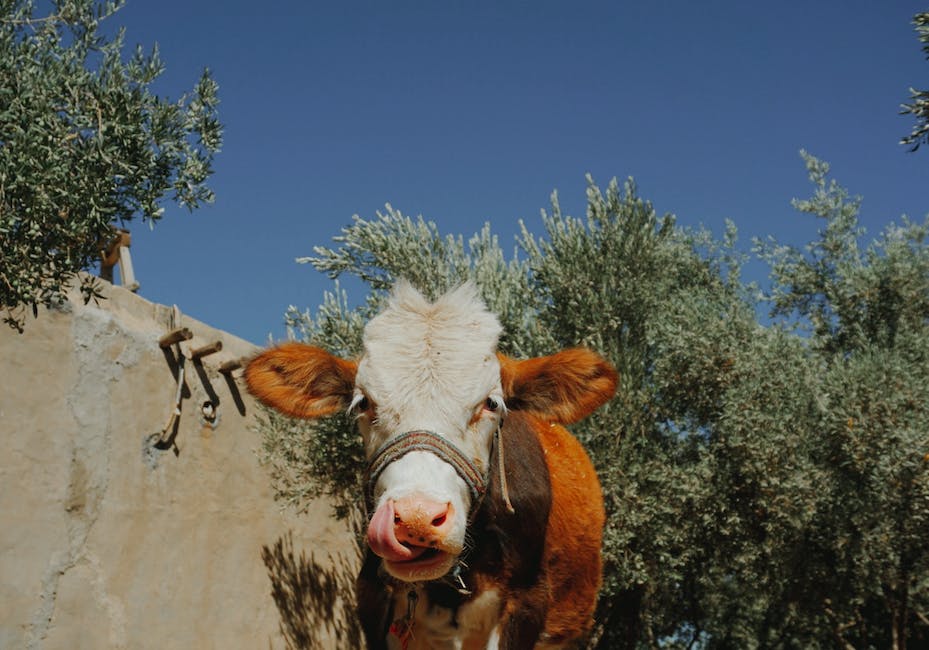
Feeding Hereford Cattle: Nutrition And Diet
Caring For Your Hereford Cattle: The Essentials Of Dietary Management
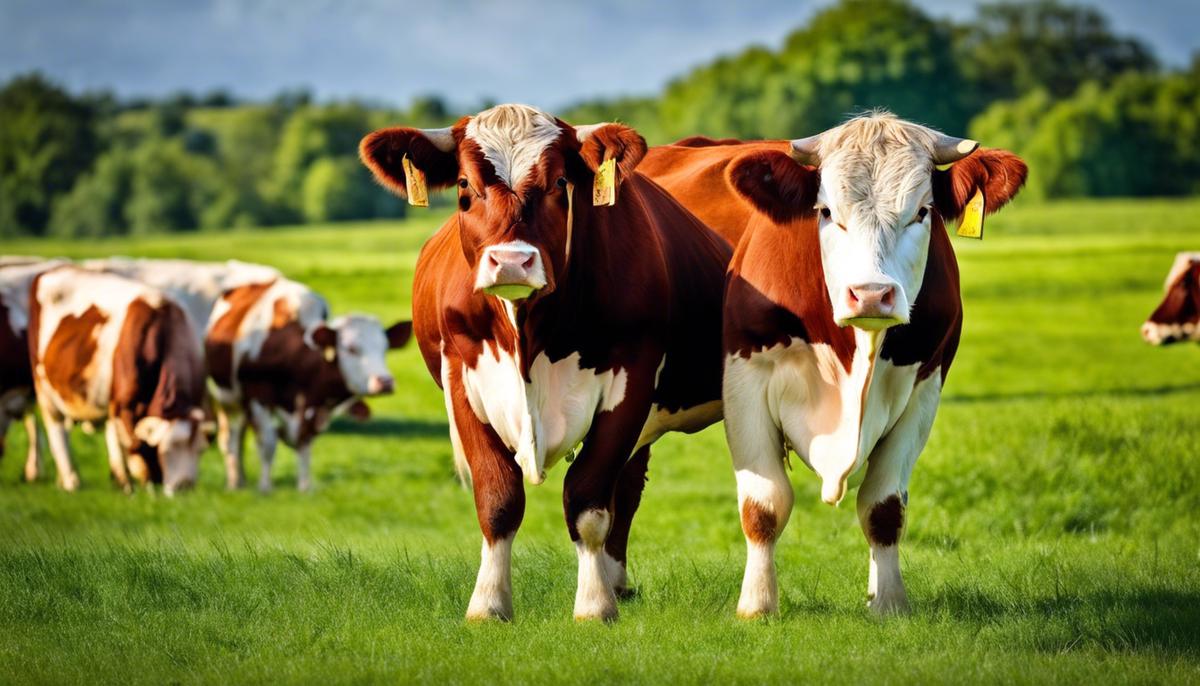
Breeding Hereford Cattle

what is special about hereford cattle?
Historical Significance of Hereford Cattle
The Pivotal Role of Hereford Cattle in Agrarian Evolution
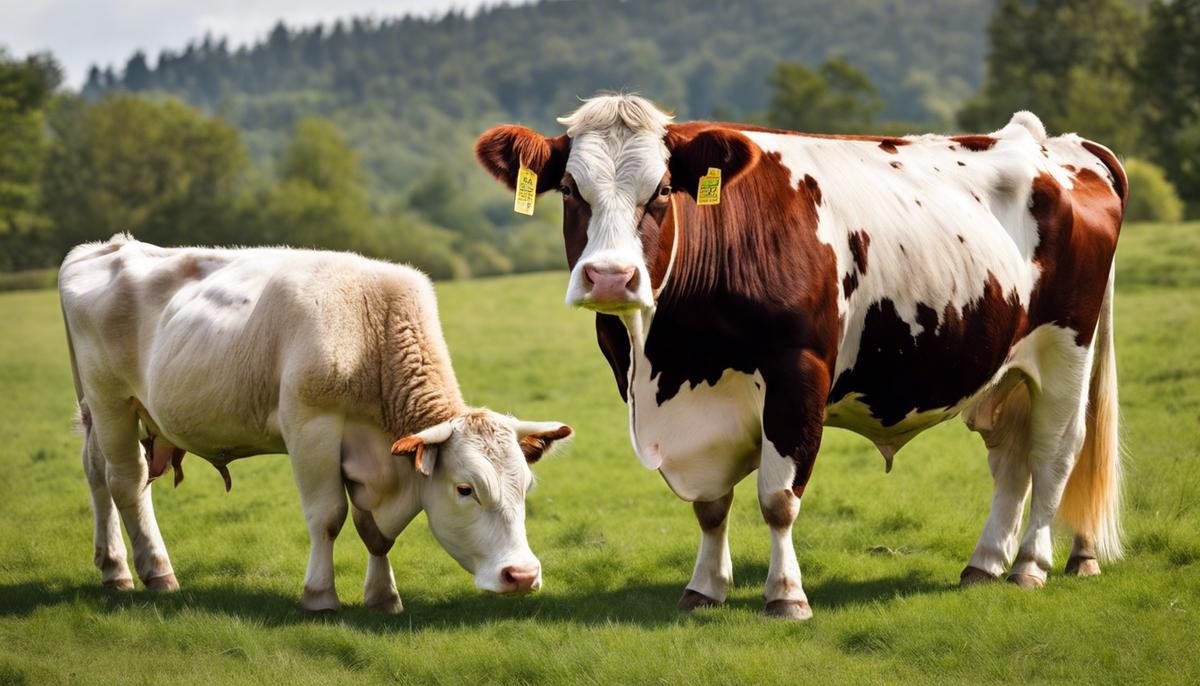
Genetic Traits and Characteristics | Hereford Cattle
Genetic Hallmarks of the Hereford Bovine

Reproductive Physiology and Breed Improvement | Hereford Cattle

Hereford Cattle in Sustainable Agriculture
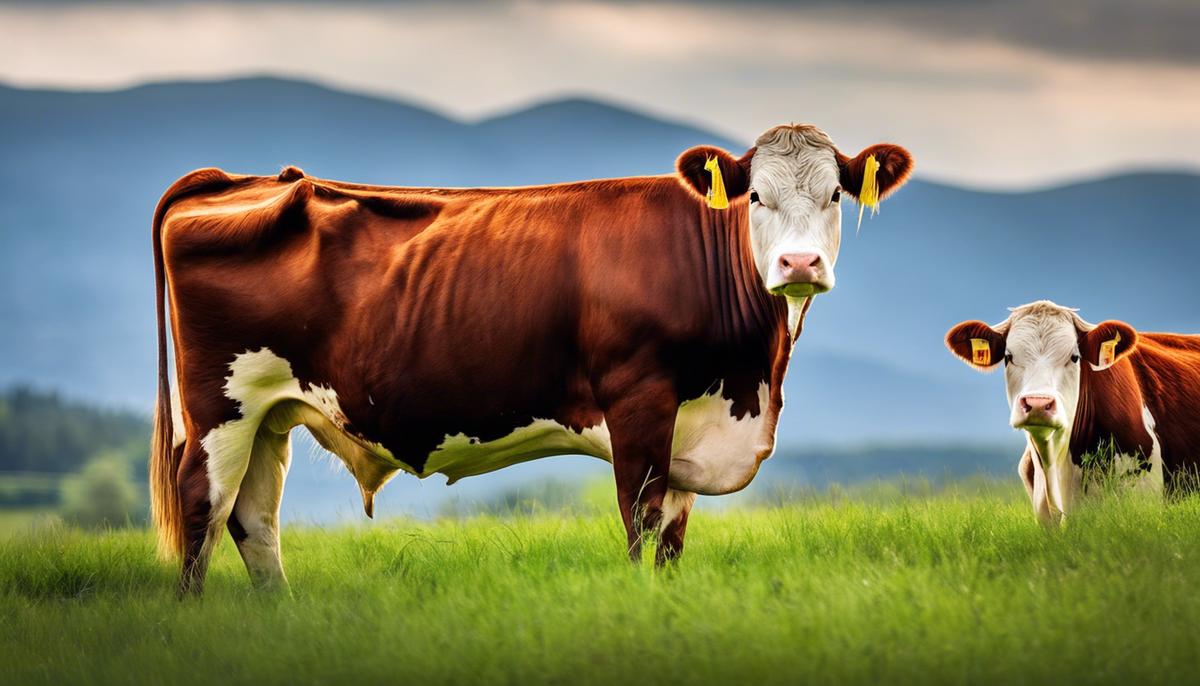
Hereford Cattle and Modern Meat Industry
In conclusion,
